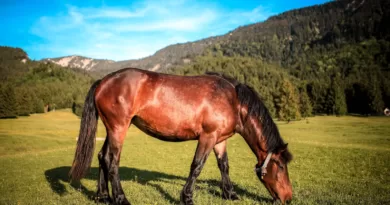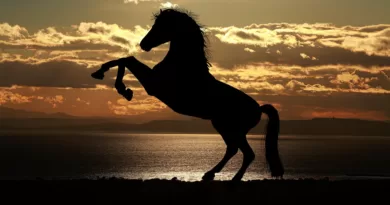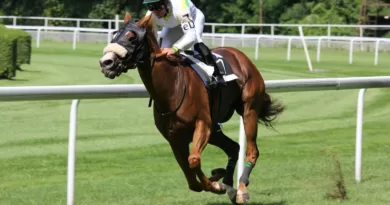How Often Do Horses Go Into Heat
The Reproductive Cycle of Horses
The reproductive cycle of horses is a complex and fascinating process that plays a crucial role in their ability to breed and produce offspring. This cycle, also known as the estrous cycle, is regulated by a delicate balance of hormones and can be influenced by various factors.
In general, the reproductive cycle of horses can be divided into four distinct phases: proestrus, estrus, diestrus, and anestrus. During the proestrus phase, the mare begins preparing her reproductive system for potential breeding. This phase is characterized by the growth and development of the follicles in the ovaries. As the proestrus phase transitions into estrus, the mare becomes sexually receptive and displays subtle behavioral changes to attract potential mates. This is the phase commonly referred to as being “in heat” or “in season.”
Understanding the Estrous Cycle in Horses
The estrous cycle, also known as the heat cycle, is a crucial aspect in understanding the reproductive cycle of horses. This cycle is a recurring pattern of hormonal changes that a mare undergoes, signaling her readiness for breeding. Unlike other animals, horses experience a seasonal reproduction cycle, which means they only exhibit signs of heat during certain times of the year.
The estrous cycle can typically be divided into four stages: proestrus, estrus, diestrus, and anestrus. During proestrus, the mare’s reproductive tract prepares for ovulation, and she may exhibit behavioral changes. Estrus is the period of actual heat when the mare is most fertile and receptive to the stallion. Diestrus is the stage where the mare’s reproductive system prepares for pregnancy, and anestrus refers to the period of sexual inactivity. Understanding these stages is essential in determining the best time for breeding and managing the horse’s reproductive health.
Factors Affecting the Frequency of Heat Cycles in Horses
The frequency of heat cycles in horses can be influenced by various factors. One of the primary factors is the season. Typically, mares have a higher frequency of heat cycles during the spring and summer months, while the frequency decreases during the fall and winter. This seasonal variation is believed to be linked to the longer daylight hours and changes in temperature.
Another factor that affects the frequency of heat cycles is the age of the mare. In general, younger mares tend to have more frequent heat cycles compared to older mares. As mares age, their reproductive function may decline, resulting in fewer heat cycles. Additionally, the presence of certain health conditions, such as hormonal imbalances or underlying reproductive disorders, can also affect the regularity of heat cycles in mares. It is important for horse owners and breeders to be aware of these factors as they can impact the breeding and reproductive management of mares.
Signs of Heat in Mares
Mares go through regular heat cycles during their reproductive years, typically from early spring to late autumn. Detecting the signs of heat in mares is crucial for breeding purposes or simply for managing their behavior and health. One of the primary indicators of a mare being in heat is her change in behavior. Mares in heat may become more restless or agitated, often pacing or squealing more frequently. They may also exhibit increased flirtatious behavior towards geldings or other mares, such as nickering, winking, or raising their tail. Additionally, some mares may display signs of increased urination or squatting, a behavior known as “squatting and squirting,” during their heat cycle. These behavioral and physical changes can be a clear indication that a mare is in heat.
Aside from behavioral changes, another noticeable sign of a mare in heat is her acceptance of a stallion or gelding for mating. Mares will display a certain level of receptivity during their heat cycle, which can be observed through their posture and response to a potential mate. When a mare is in heat, she may stand still and lift her tail when a stallion or gelding approaches for mating. This behavior, known as “standing heat,” is a key signal that the mare is ready and willing to breed. It is important for horse owners and breeders to be able to identify these signs of heat in mares accurately, as it plays a vital role in managing their reproductive health and facilitating successful breeding.
Duration and Timing of Estrus in Horses
The duration and timing of estrus, also known as heat, in horses can vary between individuals. On average, the estrus period lasts for about five to seven days. However, this can fluctuate and may be shorter or longer depending on the mare. It is important for horse owners and breeders to closely monitor their mares during this time to ensure proper breeding opportunities.
The timing of estrus in horses can also be quite unpredictable. Generally, mares experience their first heat of the year in the spring, when the days are longer and the weather is warmer. This is known as the transitional phase. Following this, mares typically go into regular cycles, with intervals of approximately 21 days between each heat. However, it is worth noting that not all mares follow this exact pattern, and some may have irregular cycles. Understanding the duration and timing of estrus in horses is crucial for successful breeding and reproductive management.
• The duration of estrus in horses can vary between individuals, typically lasting for about five to seven days.
• However, the length of estrus can fluctuate and may be shorter or longer depending on the mare.
• Horse owners and breeders should closely monitor their mares during this time to ensure proper breeding opportunities.
• The timing of estrus in horses is often unpredictable.
• Mares usually experience their first heat of the year in spring when the days are longer and the weather is warmer, known as the transitional phase.
• Following this, mares generally go into regular cycles with intervals of approximately 21 days between each heat.
• It’s important to note that not all mares follow this exact pattern, and some may have irregular cycles.
• Understanding the duration and timing of estrus in horses is crucial for successful breeding and reproductive management.
Differences Between Mares and Geldings in Heat Cycles
Mares and geldings, both integral members of the equine species, exhibit notable differences in their heat cycles. The most apparent variance lies in the fact that mares experience regular heat cycles throughout their reproductive years, while geldings do not. Mares typically go into heat every 21 days, although this can vary depending on factors such as age, breed, and individual characteristics. Geldings, on the other hand, undergo castration – a surgical procedure that removes their testicles – effectively eliminating the ability to produce and release hormones that trigger heat cycles.
Another distinction between mares and geldings in heat cycles is the behavioral changes that occur during this period. Mares in heat, also known as being in estrus, often exhibit more noticeable external signs compared to geldings. These signs may include frequent urination, an increased interest in stallions or other mares, tail lifting or flagging, and a more aggressive or irritable temperament. In contrast, geldings do not display these behaviors as they lack the hormonal fluctuations associated with heat cycles. Consequently, understanding and recognizing these differences is crucial for horse owners, breeders, and equestrians in managing the reproductive health and behavior of mares and geldings.
Managing Heat Cycles in Performance Horses
Managing heat cycles in performance horses is a crucial aspect of equine breeding and training. Performance horses, such as racehorses or show jumpers, require careful management of their heat cycles to maximize their athletic potential and overall well-being. By understanding and effectively managing these cycles, horse owners and trainers can optimize the horse’s performance, as well as ensure their reproductive health.
One important aspect of managing heat cycles in performance horses is determining the optimal time for breeding. Time and timing are everything when it comes to horse breeding, as the goal is to achieve successful pregnancies and healthy foals. By closely monitoring the mare’s heat cycles, horse owners and breeders can identify the most fertile periods for mating. This not only increases the chances of a successful pregnancy but also allows trainers to plan the horse’s competitive schedule accordingly, ensuring that the mare isn’t in heat during important events or training sessions. Additionally, managing heat cycles can also help prevent unwanted pregnancies, as mares in heat can be more prone to wandering or attracting unwanted attention from stallions.
The Importance of Heat Detection in Equine Breeding
Heat detection plays a pivotal role in successful equine breeding. By accurately identifying when a mare is in heat, breeders can optimize the chances of a successful mating and subsequent conception. The ability to detect heat is crucial as mares are only receptive to mating during specific periods of their estrous cycle.
One of the primary methods used to detect heat in mares is observation of their behavior. Mares in heat may display various signs such as frequent urination, squatting, winking of the vulva, tail raising or flagging, and increased interest in stallions. Additionally, some mares may show increased aggression or irritability during this time. By closely observing these behavioral cues, breeders can determine the optimal timing for introducing mares to stallions for successful breeding.
Reproductive Health and Heat Cycles in Older Mares
Older mares, just like humans, experience a decline in reproductive health as they age. This decline is characterized by changes in their heat cycles, which can become irregular or less frequent. One common change is an extended length of time between heat cycles, with some mares going months without showing signs of being in heat. This can make it more challenging for breeders to determine the optimal time for breeding. Additionally, older mares may have a lower conception rate and an increased risk of fertility issues, such as difficulty in becoming pregnant or maintaining a pregnancy.
It is important for horse owners and breeders to closely monitor the reproductive health of older mares. Regular veterinary check-ups and hormonal tests can provide valuable information about the mare’s reproductive status and identify any potential abnormalities or disorders. By keeping a close eye on the mare’s heat cycles and reproductive health, breeders can adjust their breeding plans accordingly, ensuring the best chances of successful breeding and a healthy foal. Furthermore, early detection and treatment of any reproductive health issues can increase the chances of resolving them and improving the mare’s overall reproductive health.
Abnormalities and Disorders Related to Heat Cycles in Horses
Abnormalities and disorders related to heat cycles in horses can have a significant impact on their reproductive health and breeding potential. One common abnormality is anovulation, where the mare fails to ovulate during her heat cycle. This can result in prolonged estrus behavior without the release of an egg, leading to failed breeding attempts. Another disorder that can occur is irregular heat cycles, where the mare experiences unpredictable and inconsistent estrus periods. This can make it challenging for breeders to plan and time successful breeding, as the mare may not exhibit the usual signs of heat or may come into heat at unexpected times. Additionally, some mares may suffer from follicular cysts, which are fluid-filled sacs on the ovaries that can interfere with normal ovulation and fertility. These abnormalities and disorders require careful monitoring and management to optimize a mare’s reproductive potential.
What is the reproductive cycle of horses?
The reproductive cycle of horses refers to the series of events and physiological changes that occur in a mare’s body to prepare for and go through pregnancy.
How can I understand the estrous cycle in horses?
The estrous cycle in horses, also known as the heat cycle, is a recurring process that involves the development and release of eggs from the mare’s ovaries, as well as changes in her behavior and reproductive tract.
What factors can affect the frequency of heat cycles in horses?
Factors such as age, season, nutrition, stress, and presence of a stallion can influence the frequency of heat cycles in horses.
What are the signs of heat in mares?
Signs of heat in mares include increased urination, vocalization, restlessness, flirtatious behavior, swelling of the vulva, and receptive postures towards a stallion.
How long does estrus last in horses and when does it typically occur?
Estrus in horses usually lasts around 5 to 7 days, and it typically occurs every 21 days during the breeding season.
Are there differences between mares and geldings in heat cycles?
No, geldings do not have heat cycles as they have been castrated. Only intact mares will experience regular heat cycles.
How can heat cycles be managed in performance horses?
Heat cycles in performance horses can be managed through various methods, including hormonal treatments, natural cycle suppression, and strategic breeding plans.
Why is heat detection important in equine breeding?
Heat detection is crucial in equine breeding to determine the optimal time for mating or artificial insemination, maximizing the chances of successful conception.
How do heat cycles in older mares affect their reproductive health?
Heat cycles in older mares may become irregular or less frequent, which can affect their fertility and reproductive health. Regular veterinary monitoring is recommended.
What are some abnormalities and disorders related to heat cycles in horses?
Abnormalities and disorders related to heat cycles in horses can include silent heat, prolonged heat, anestrus (absence of heat), ovarian cysts, uterine infections, and hormonal imbalances. These conditions may require veterinary intervention.




